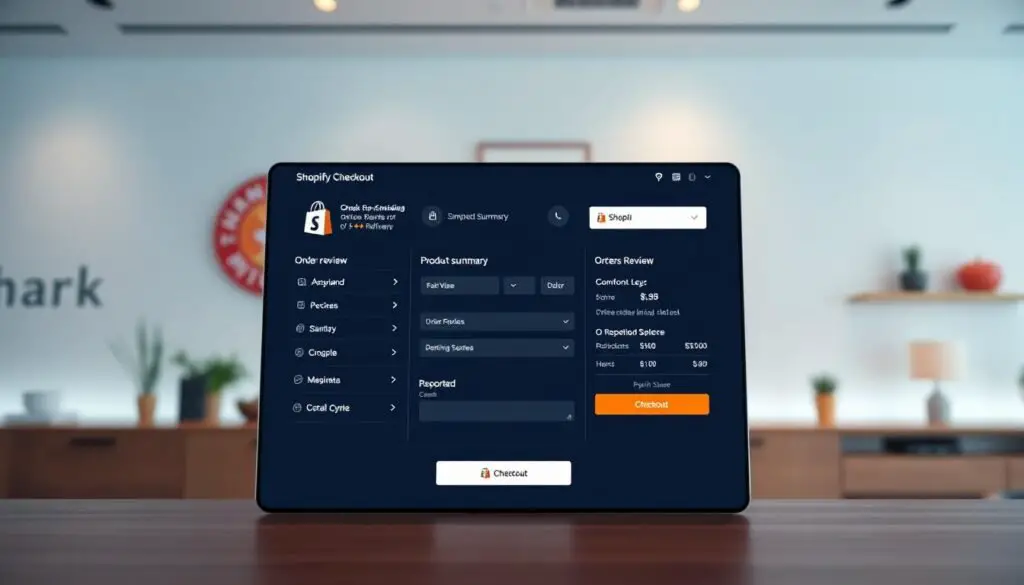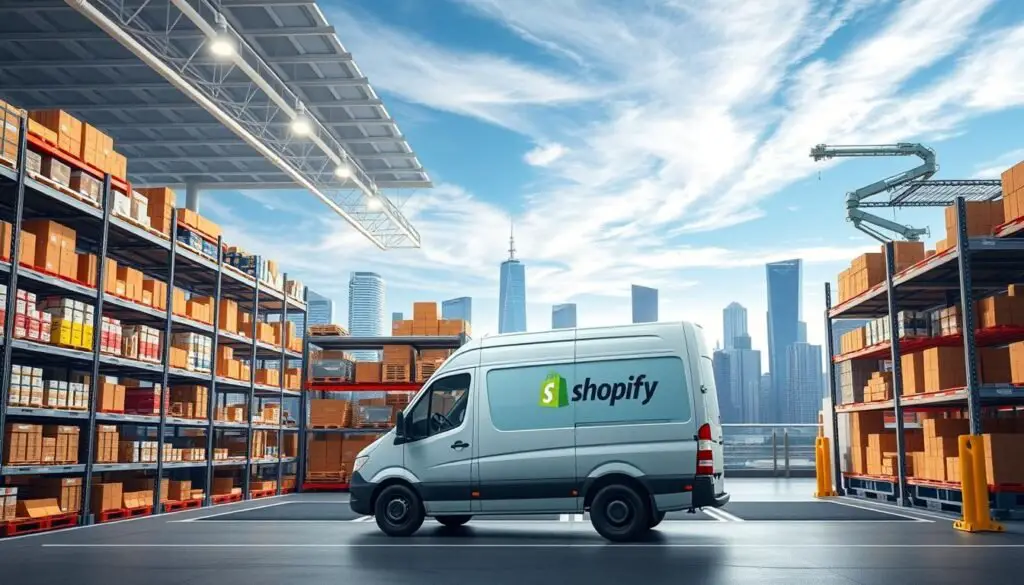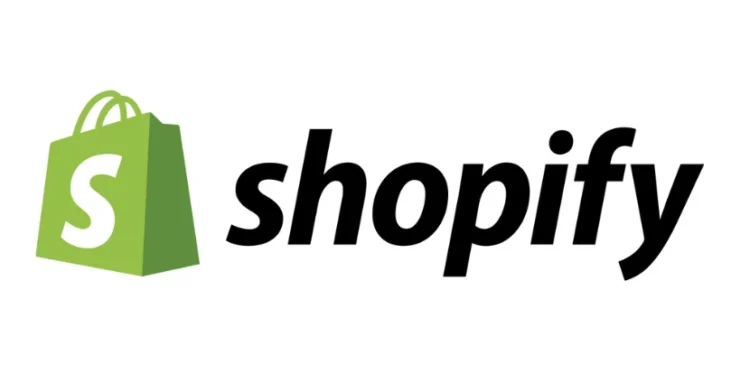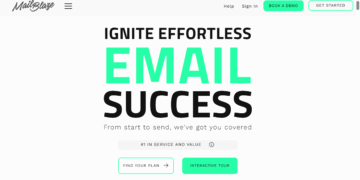Have you ever wondered how a simple snowboard shop transformed into a global commerce platform powering millions of businesses? Today, Shopify stands as a leader in the ecommerce space, supporting over 5.6 million stores across 175+ countries.
With $7.1 billion in revenue and $235.9 billion in gross merchandise volume (GMV) in 2023, Shopifycontinues to redefine online selling. Its growth from a small startup to a NYSE-listed company (SHOP) proves its reliability for entrepreneurs.
The system offers powerful tools like POS integrations, seamless payment processing, and international expansion features. Developers love its Liquid templating language and Hydrogen framework, while business owners benefit from 10,000+ apps in the ShopifyApp Store.
Key Takeaways
- Powers 5.6 million active stores worldwide
- Generated $7.1 billion revenue in 2023
- Offers specialized developer tools and frameworks
- Provides extensive app integrations
- Supports global business expansion
Why Choose Shopify for Your Ecommerce Business?
From startups to Fortune 500 brands, businesses trust this system for growth. With 8,100 employees supporting 5.6 million stores, it offers unmatched reliability. Whether you’re selling handmade goods or managing global inventory, the platform adapts to your needs.
Scalability for Businesses of All Sizes
Tiered pricing ensures you only pay for what you need. Basic plans suit new sellers, while Shopify handles 10,000+ orders per minute. Brands like Cheekbone Beauty scaled from $0 to 7-figures using its API integrations.
Unlike WooCommerce, hosting and security are built-in. No extra costs for plugins or server maintenance. Enterprise users automate workflows with ShopifyFlow, saving 20+ hours monthly.
All-in-One Platform vs. Competitors
While Amazon charges 15-20% per sale, this platform keeps fees under 3% with ShopifyPayments. It also syncs online/offline sales seamlessly—a feature competitors lack without third-party apps.
Forrester ranks it #1 for B2B commerce tools. Unified analytics, multi-channel selling, and 10,000+ apps eliminate the need for patchwork solutions.
Setting Up Your Shopify Store
Launching an online store has never been easier with modern ecommerce solutions. Follow these steps to configure your store efficiently, from domain selection to compliance settings.
Step 1: Sign Up and Choose a Plan
Start with a 72-hour free trial to explore features risk-free. Select a plan matching your business size—Basic for startups or Advanced for scaling merchants.
Step 2: Select a Domain Name
Register a custom domain directly through the platform or connect an existing one. Keep it short, brandable, and easy to spell for better recall.
Step 3: Configure Basic Store Settings
Set up tax rules for US state compliance and enable EU GDPR features if selling internationally. Assign staff roles with tailored permissions for secure collaboration.
Integrate tools like QuickBooks or Mailchimp using API keys for seamless workflows. The dashboard’s intuitive design guides you through each step.
Customizing Your Store’s Design
Your store’s design directly impacts customer trust and sales—here’s how to perfect it. A polished layout, fast load times, and mobile-friendly interfaces keep shoppers engaged. Start with these core strategies.
Picking a Theme That Converts
Choose themes based on performance, not just looks. The Dawn theme loads in under 500ms, ideal for SEO and conversions. Filter options in the Theme Store include “high-converting” and “mobile-optimized” tags.
Niche aesthetics matter, but prioritize built-in features like AMP support for product pages. Brands like Wild Fork Foods boosted mobile sales by 30% after optimizing their theme.
Advanced Tweaks with Liquid
For unique branding, use Liquid—the platform’s templating language. Created in 2006, it lets developers customize checkout flows or create dynamic color schemes. Hydrogen framework takes it further for headless storefronts.
Mobile Responsiveness Non-Negotiables
Over 60% of traffic comes from mobile devices. Ensure buttons are thumb-friendly and text scales properly. Test designs using built-in emulators and follow WCAG 2.1 accessibility standards.
Pro tip: Use sticky headers for easy navigation and compress images to maintain speed.
Adding Products to Your Shopify Store
Stocking your online store with products is the first step to turning visitors into buyers. A well-optimized catalog improves search rankings and streamlines operations. Follow these strategies to list items efficiently.
Optimize Product Descriptions for SEO
Write clear, keyword-rich descriptions that highlight benefits. Tools like AI-powered generators can speed up the process while maintaining quality. Include bullet points for scannability and add alt text to images.
For bulk uploads, use CSV files to save time. Ensure titles and meta tags align with search intent to boost visibility.
Manage Variants and Collections
Group similar items using smart collections with auto-updating rules. For products with multiple options (sizes, colors), set up variants to keep inventory organized.
Tag items strategically to simplify filtering. This helps customers find what they need faster, reducing bounce rates.
Streamline Inventory Management
Sync stock levels across channels with tools like SkuVault. Enable low-stock alerts to avoid overselling. Integrate warehouse robots (6 River Systems) or fulfillment partners (Deliverr) for 2-day shipping guarantees.
Use barcode scanners with POS hardware for accurate tracking. Automate reorders to maintain optimal stock levels without manual checks.
Understanding Shopify Payments and Checkout
A smooth checkout process can make or break your online sales—here’s how to optimize it. The right payment tools reduce friction, boost trust, and recover abandoned carts. Over 35% of lost sales are recovered with streamlined solutions.

How Shopify Payments Cuts Transaction Fees
Using the platform’s native payment processor saves 0.5–2% per transaction versus external gateways. Built-in PCI compliance and chargeback protection reduce risks. Sellers also avoid extra fees for third-party security audits.
For global sales, local methods like Klarna or Affirm integrate seamlessly. These options increase conversions by 18% in supported regions.
Integrating Third-Party Gateways
PayPal and Stripe remain popular for buyer flexibility. Sync them automatically to manage all payments in one dashboard. Avoid manual reconciliation with real-time reporting.
Pro tip: Offer multiple payment options but prioritize Shopify Payments for the lowest fees. Test gateways during peak seasons to balance cost and convenience.
Accelerated Checkout with Shop Pay
With 150M+ users, Shop Pay speeds up purchases by storing customer details securely. One-click checkout cuts abandonment by 50%. Enable Shop Pay Installments to split payments interest-free.
Customize checkout fields with UI extensions for branding. Add delivery notes or gift messages without coding. Every tweak improves the buyer experience.
Leveraging the Shopify App Store
Boost sales and efficiency with tools designed for ecommerce success. The platform’s app store offers 10,000+ solutions to automate tasks, manage inventory, and enhance customer support. Developers earned $230M in 2020, proving its value for businesses of all sizes.
Top Apps for Marketing Automation
Klaviyo dominates email and SMS marketing with AI-driven workflows. Its $100M investment in the platform ensures seamless integration. Brands using Klaviyo see 30% higher repeat purchase rates.
Pair it with Zapier to connect 5,000+ apps without coding. Automate tasks like syncing leads from Facebook Ads to your CRM.
Must-Have Inventory Management Tools
Shippo simplifies shipping labels and tracking across carriers. Recharge handles subscriptions, reducing churn by 25% for brands like Billie.
For fraud prevention, Signifyd guarantees chargeback protection. It scans 10,000+ data points per transaction to block risky orders.
Customer Service Apps Like Gorgias
Gorgias unifies support tickets from email, chat, and social media. AI suggests responses, cutting resolution time by 40%. Marsello’s loyalty program integrates here to reward repeat buyers automatically.
Pro tip: Audit apps quarterly. Remove unused ones to speed up your store and reduce costs.
Using Shopify POS for Offline Sales
Modern retailers need unified systems to manage both physical and digital sales channels. The right retail pos solution bridges this gap, with features like real-time inventory updates and staff management tools. For businesses using Shopify, the POS Pro plan at $89/month provides enterprise-grade capabilities.
Choosing the Right Hardware Setup
iPad POS systems offer sleek interfaces and Apple Pay compatibility, while Android options provide budget flexibility. Essential peripherals include barcode scanners (like Socket Mobile S700) and receipt printers (Epson TM-m30).
All hardware integrates via Bluetooth or USB. The platform maintains a compatibility list for stress-free setup. Consider pos ui extensions to customize checkout screens for your brand.
Unified Inventory Management
Sync stock levels automatically across online and point sale locations. When items sell in-store, your website inventory updates instantly. This powers buy-online-pickup-in-store (BOPIS) flows that 43% of shoppers now prefer.
Set low-stock alerts to replenish items before they run out. The system tracks inventory movement across all channels in one dashboard.
Key features for retail success:
- Offline mode processes payments during internet outages
- Role-based permissions control staff access to discounts or voids
- Retail analytics show top-selling items by location
- Customer profiles track purchase history across channels
Marketing Your Shopify Store
Effective marketing turns browsers into buyers—here’s how to maximize your store’s potential. From SEO to paid ads, the right mix of strategies boosts visibility and conversions. Start with these core tactics.
SEO Strategies for Product Pages
Optimize product pages with structured data markup to earn rich snippets in search results. Include keywords naturally in titles, descriptions, and alt text. Tools like Google’s Keyword Planner help identify high-intent phrases.
Speed matters. Compress images and use lazy loading to maintain sub-second load times. Mobile-friendly designs with clear CTAs reduce bounce rates.
Running Facebook and TikTok Ads
Facebook’s ad platform offers granular targeting by interests and behaviors. Retargeting pixels track visitors who abandon carts, bringing them back with dynamic ads.
Though TikTok Shop integration ended in 2023, UGC campaigns still thrive. Partner with micro-influencers to showcase products authentically. Short, engaging clips outperform polished ads.
Email Marketing with Shopify Email
Shopify Email includes 10K free monthly sends—ideal for startups. Compare Klaviyo vs. Omnisend for advanced automation. Klaviyo’s AI-driven flows increase repeat purchases by 30%.
Follow TCPA rules for SMS campaigns. Offer opt-ins at checkout and segment lists for personalized promotions. Dovetale simplifies influencer collaborations with built-in tracking.
- Use schema markup for better SERP visibility
- Test TikTok ads with trending sounds
- Automate abandoned cart emails
Optimizing for Conversions
Turning visitors into paying customers requires strategic checkout optimizations. With a 69.8% average cart abandonment rate, small tweaks can recover lost sales. Focus on streamlining the process and building trust at every step.
Checkout Customization with UI Extensions
Tailor your checkout flow using UI extensions for branding and functionality. Add custom fields for gift messages or delivery instructions without coding. Shopify’s 2024 Checkout Blocks acquisition expands these capabilities further.
Display trust badges (SSL seals, payment icons) near the payment button. Shoppers are 18% more likely to complete purchases with visible security cues. Test placements using Google Optimize for ideal positioning.
Reducing Cart Abandonment
Combat drop-offs with exit-intent popups offering discounts or free shipping. Integrate a UPS shipping calculator early in the checkout to avoid surprise costs. Tools like CartHook recover 15–30% of abandoned carts automatically.
Balance guest checkout and account creation. Mandatory sign-ups increase abandonment by 25%. Instead, prompt registration post-purchase with incentives like loyalty points.
- A/B test checkout layouts (single-page vs. multi-step)
- Enable post-purchase upsells via apps like ReConvert
- Simplify returns with prepaid labels to boost confidence
Shopify Shipping and Fulfillment Solutions
The right logistics strategy separates thriving stores from struggling ones. Modern solutions combine cost efficiency with fast delivery to meet customer expectations. Over 80% of shoppers consider shipping options before completing purchases.

Access Discounted Carrier Rates
Save up to 77% on USPS Commercial Plus pricing compared to retail rates. Regional carriers like LaserShip and OnTrac offer same-day delivery in metro areas. These integrations appear automatically in your shipping dashboard.
Customize packaging slips with branded logos and return instructions. The system auto-generates customs forms for international orders. Carbon-neutral shipping options help eco-conscious brands offset emissions.
Fast Fulfillment Through Deliverr
Following its $2.1B acquisition, Deliverr provides 2-day nationwide delivery. Inventory syncs across warehouses in real-time to prevent overselling. The network handles returns through Loop for seamless reverse logistics.
Key advantages for growing businesses:
- Multi-carrier intelligence picks the cheapest/fastest option per order
- Automated 3PL selection based on product dimensions
- Real-time tracking updates reduce customer service inquiries
- Custom workflows for subscription box fulfillment
Expanding Internationally with Shopify
Global markets offer immense potential for ecommerce businesses ready to scale beyond borders. Over 57% of online shoppers buy from foreign stores when localized options exist. The right tools simplify cross-border selling while navigating complex regulations.
Multi-Currency and Language Support
Shoppers are 3x more likely to buy when prices display in their local currency. The platform automatically converts amounts using real-time exchange rates. Dynamic geolocation redirects visitors to country-specific storefronts.
Integrate translation apps like Weglot for 100+ language options. Local payment methods (iDEAL for the Netherlands, Alipay for China) boost conversion rates by 18%. The JD.com partnership streamlines access to 550M Chinese consumers.
Tax Compliance Tools
Automated VAT MOSS reporting handles EU digital goods taxes. The system generates country-specific invoices with proper tax IDs. For physical products, configure duty calculators to show landed costs upfront.
Key strategies for smooth expansion:
- Set market-specific product restrictions (e.g., CBD bans in UAE)
- Disclose currency conversion fees at checkout
- Use local fulfillment centers to reduce shipping costs
- Register local business entities when exceeding tax thresholds
Shopify Plus for High-Growth Businesses
Enterprise-level sellers need robust solutions to handle complex workflows and massive traffic. The platform’s premium tier delivers enterprise-grade tools for brands processing $1M+ annually. Starting at $2,000/month, it supports unlimited staff accounts and advanced automation.
Automate Operations with Custom Workflows
Shopify Flow lets merchants create automated rules without coding. Set triggers for low inventory, high-value orders, or customer behavior patterns. One fashion brand reduced manual tasks by 40 hours weekly using workflow automation.
Common use cases include:
- Auto-tagging VIP customers spending $500+
- Priority routing for wholesale orders
- Fraud analysis on high-risk transactions
Expand Possibilities with API Access
Over 300 API endpoints enable deep platform customization. Developers can build:
- Custom checkout experiences with UI extensions
- B2B portals with tiered pricing
- Real-time syncs with Salesforce or ERP systems
Enterprise solutions include 99.99% uptime SLAs and dedicated support channels. The Plus Merchant Success Program offers strategic guidance for scaling globally.
Analyzing Performance with Shopify Reports
Data-driven decisions separate thriving stores from struggling ones—here’s how to leverage analytics effectively. The platform provides 85+ built-in report templates covering sales, customer behavior, and marketing performance. These tools help identify trends without third-party software.
Essential Metrics for Store Owners
Focus on key metrics like customer lifetime value (LTV) versus acquisition cost (CAC). A healthy ratio indicates sustainable growth. Attribution models reveal which channels drive conversions—first-click for awareness, last-click for closers.
For physical retailers, POS sales reports show hourly trends and staff performance. Hotjar heatmaps complement this data by visualizing where shoppers click or hesitate. Always cross-reference metrics to avoid skewed interpretations.
Advanced Tracking with Google Analytics
GA4’s ecommerce tracking provides deeper insights than native reports. Set up enhanced measurement for scroll depth and video engagement. The platform’s custom report builder lets you create dashboards for specific KPIs.
Remember: Data exports have limits (10K rows). For large stores, schedule weekly exports or use API connections. Combine quantitative data with qualitative feedback for complete performance analysis.
Shopify Capital: Funding Your Growth
Growing your ecommerce business often requires smart funding solutions. Shopify Capital has provided over $5.1 billion to merchants since its launch, offering flexible alternatives to traditional loans. This revenue-based model aligns repayments with your sales, reducing financial strain during slower months.
How Eligibility and Repayment Work
Approval depends on your store’s sales history and growth potential. Unlike banks, there’s no credit check—your shopify performance data drives decisions. Funds arrive in 2–5 business days, with repayments deducted as a percentage of daily sales.
Key advantages include:
- No fixed deadlines: Pay more during peak seasons, less during dips
- Early repayment discounts: Save on fees by settling ahead of schedule
- Transparent fees: Flat borrowing costs, no compounding interest
Success Stories from Real Merchants
A furniture brand scaled to $2M annual revenue using capital for inventory and marketing. The funds helped them launch a best-selling product line without draining cash reserves.
Compared to traditional loans, this model avoids collateral requirements. Shopify’s 13% stake in Flexport shows its commitment to supporting merchant logistics too. Whether you need $500 or $500K, the platform tailors solutions to your growth stage.
Partnering with Shopify Experts
Building a successful online store often requires specialized skills beyond basic setup. The platform’s network of 10,000+ certified professionals helps merchants tackle complex projects efficiently. Whether you need custom coding or strategic consulting, these partners bring proven expertise to elevate your business.
Identifying When to Bring in Professionals
Consider hiring experts for tasks like:
- Custom app development beyond standard solutions
- Migrating from other platforms without data loss
- Implementing enterprise-level security protocols
The 20% revenue share model ensures partners remain invested in your success. Complex integrations or rebranding projects typically justify the investment.
Navigating the Partner Directory
The official directory lets you filter by:
- Service type (design, marketing, development)
- Client reviews and project portfolios
- Industry-specific experience
Always verify certifications before hiring. Request case studies showing measurable results from similar projects. Established agencies often provide free initial consultations to assess needs.
Key considerations when selecting partners:
- Clearly define project scope and timelines upfront
- Review maintenance and support agreements
- Ensure NDAs protect sensitive business data
- Compare pricing models (hourly vs. project-based)
Conclusion
Choosing the right commerce platform shapes your business’s future growth and efficiency. For scalability without hidden costs, Shopify balances enterprise power with startup-friendly plans. Its Nasdaq listing ensures long-term reliability for merchants.
With retail ecommerce growing at 11% annually, the platform’s AI-powered tools and B2B features future-proof your store. Whether you’re launching or scaling, start with a 72-hour free trial to test its capabilities risk-free.
Ready to transform your sales? Sign up today and explore why millions trust this solution.
FAQ
How do I start selling on Shopify?
Sign up for an account, choose a pricing plan, and customize your store with themes and products. The platform guides you through each step.
What makes Shopify better than other ecommerce platforms?
It offers built-in tools for payments, shipping, and marketing, plus a vast app store for added functionality. No coding is needed for most setups.
Can I sell in-person with Shopify?
Yes. The POS system syncs online and offline sales, with hardware options for retail stores.
How do I accept payments on my store?
Use Shopify Payments for lower fees or integrate third-party gateways like PayPal and Stripe.
What apps should I install first?
Focus on marketing (Klaviyo), inventory management, and customer service (Gorgias) to streamline operations.
Does Shopify support international selling?
Yes. Multi-currency, language options, and tax tools help expand globally.
How can I customize my checkout?
Use checkout blocks or UI extensions to tweak the process without coding.
What’s Shopify Plus for?
It’s for high-growth brands needing advanced automation, API access, and custom workflows.
How do I track my store’s performance?
Built-in reports show sales trends. For deeper insights, integrate Google Analytics.
Where can I find experts to help with my store?
The Partner Directory lists certified developers and designers for hire.


